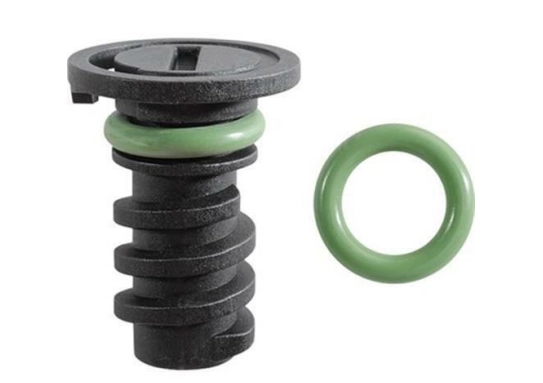oil pan crush washer
Understanding Oil Pan Crush Washers Importance and Maintenance
In automotive maintenance, one often overlooked but critical component is the oil pan crush washer. This small, but pivotal hardware item plays a significant role in ensuring the integrity of oil systems in vehicles. Understanding what oil pan crush washers are, their function, and maintenance tips can help any car owner or mechanic avoid costly repairs and ensure optimal engine performance.
What is an Oil Pan Crush Washer?
An oil pan crush washer, also known simply as a crush washer or a sealing washer, is typically made from soft metal, such as aluminum or copper. This washer is used in conjunction with the oil drain plug. When tightened, the crush washer compresses to create a tight seal, preventing engine oil from leaking out of the oil pan.
The importance of this component arises from its positioning—located at the junction where the oil pan meets the drain plug. This area is subjected to considerable pressure and heat during engine operation, making it susceptible to wear and tear. Therefore, the crush washer must be effective in maintaining a leak-free connection.
Functionality and Importance
The main function of an oil pan crush washer is to create a leak-proof seal around the oil drain plug. If this seal fails, it can lead to oil leaks, which not only diminish the oil level in the engine but can also cause significant damage to engine components over time. Low oil levels might lead to engine overheating, increased friction, and ultimately, engine failure.
Moreover, the performance of an engine relies heavily on proper lubrication. Oil leaks can result in inadequate lubrication, leading to premature wear of vital engine parts. Therefore, regular inspection and replacement of the crush washer during oil changes or any time the oil pan is accessed is crucial.
Choosing the Right Washer
oil pan crush washer

When replacing an oil pan crush washer, it is essential to select the appropriate size and material. Many vehicles come with specific size recommendations, and using a washer that doesn't fit properly can lead to leaks. Steel crush washers may be used for high-temperature applications due to their durability, whereas aluminum washers are more common in regular applications.
Whenever you perform an oil change, it’s a best practice to replace the crush washer. Reusing a crush washer can result in inadequate sealing due to deformation or wear. It's a small cost relative to the potential damage that could occur from an oil leak.
Installation Tips
Proper installation of the oil pan crush washer is vital to ensure its effective performance. Here are some quick tips
1. Surface Preparation Always clean the mating surfaces of both the drain plug and the oil pan to remove any old washer material and ensure a smooth, clean fit.
2. Orientation Ensure that the crush washer is installed flat against the surface of the oil pan. It should not be tilted, as this can lead to uneven pressure and inadequate sealing.
3. Torque Specifications Follow manufacturer recommendations for tightening the oil drain plug. Over-tightening can crush the washer excessively and lead to improper sealing or breakage, while under-tightening can lead to leaks.
Conclusion
In summary, the oil pan crush washer may seem insignificant, but it plays a vital role in maintaining the health of an engine. By understand its importance, selecting the appropriate type, ensuring proper installation, and incorporating regular replacement into vehicle maintenance routines, car owners can help prevent oil leaks and prolong the life of their engines. Investing time in this small yet critical component can save significant costs and headaches down the road. Always remember A well-maintained engine is the heart of a reliable vehicle!
-
Understanding Different Types of Oil Drain Plugs: A Comprehensive Guide
News Jun.27,2025
-
The Role of Nylon Washers in Oil Drain Maintenance: A Practical Guide
News Jun.27,2025
-
The Essential Guide to Drain Plug Washers: Types, Uses, and Best Practices
News Jun.27,2025
-
Everything You Need to Know About Washer and Plug Sealing: Polaris-Specific and General Tips
News Jun.27,2025
-
A Comprehensive Guide to Different Types of Oil Drain Plugs for Efficient Maintenance
News Jun.27,2025
-
A Complete Guide to Oil Drain Plug Washers: Tridon and Euro Car Parts Solutions
News Jun.27,2025
-
Understanding Oil Drain Plugs: Types, Issues, and Replacements
News Jun.26,2025
Products categories















